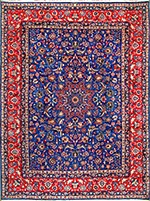Textiles Studies
Date of this Version
2014
Document Type
Article
Citation
9th International Shibori Symposium 2014, Hangzhou, pp. 32-40.
Abstract
More than a thousand years ago, Baghdad was capital of the Islamic empire under the Abbasid caliphs, and Yemen was a flourishing center of agriculture and trade. Among its famous products were dyestuffs, and cotton cloth with warp stripes, patterned using techniques of compression resist. As the strength of the Abbasid caliphate declined and claims to power gained hold in the provinces, regional artistic styles began to emerge. The rulers of Yemen adopted one of the prerogatives of the Abbasid caliphs, bestowing honor by rewarding their subjects with inscribed textiles called tiraz. From burial sites in Egypt, many such textiles have survived in fragmentary condition, often with warp fringes, and occasionally with Arabic inscriptions bearing historical names and dates, Qur’anic excerpts, and pious invocations. Acquired by dealers in the middle of the 20th century, they found their way to museums in Europe and North America (The Textile Museum, The Metropolitan Museum of Art, Cleveland Museum of Art, Royal Ontario Museum, Victoria & Albert Museum, David Collection, etc.). The carefully wrought Arabic inscriptions are executed in white embroidery or in black ink outlining an application of gold leaf applied to a plant resin. This paper presents the results of research and analysis of the outstanding holdings of The Textile Museum in Washington, DC, using microphotography, fiber and dye analysis, along with close visual observation, which yielded clear indication of sophistication and refinement of methods, suggesting collaboration among skilled dyers, weavers, embroiderers, and calligraphers in the manufacture of these elegant textiles, of which only fragments remain. The warp-resist patterns, the ornate Arabic calligraphy with serifs, flourishes and palmettes, and embroidered geometric ornament, all contribute to the definition of a strong regional style and emergent local identity in Yemen in the tenth century.
Included in
Art and Materials Conservation Commons, Art Practice Commons, Fiber, Textile, and Weaving Arts Commons, Indigenous Studies Commons, Museum Studies Commons

